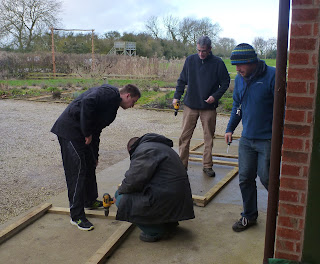Pages
- Home
- May 25
- Apr' 25
- Mar' 25
- Feb' 25
- Jan' 25
- Dec' 24
- Nov' 24
- Oct' 24
- Sep' 24
- Aug' 24
- July 24
- June 24
- May 24
- Apr' 24
- Mar' 24
- Feb' 24
- Jan' 24
- Dec' 23
- Nov' 23
- Oct' 23
- Sep' 23
- Aug' 23
- July 23
- June 23
- May 23
- Apr' 23
- Mar' 23
- Feb' 23
- Jan' 23
- Dec' 22
- Nov' 22
- Oct' 22
- Sept' 22
- Aug' 22
- Jul' 22
- Jun' 22
- May 22
- Apr' 22
- Mar' 22
- Feb' 22
- Jan' 22
- Dec' 21
- Nov' 21
- Oct' 21
- Sep' 21
- Aug' 21
- Jun' 21
- Jul' 21
- Mar' 21
- May 21
- Apr' 21
- Feb' 21
- Nov' 20
- Jan' 21
- Dec' 20
Welcome to the LDV NNR ringing blog, this blog is designed to share the experiences, findings and tales from a group of dedicated ringers. We specialise in conservation orientated research projects, largely focusing on wildfowl, waders, owls and birds of conservation concern, in and around the Vale of York NNR's.
NB - Whilst the purpose of this blog was initially designed to cover our nationally important wildfowl ringing activities, it now also features wildlife and work posts, explaining how we manage the NNR for both wildlife and people.
For daily sightings please visit our Twitter account: https://twitter.com/ldv_nnr (@LDV_NNR)
For details of events, volunteer tasks and wildlife images please visit our Facebook account: https://www.facebook.com/Lower-Derwent-Valley-Skipwith-Common-NNR
Tuesday, 26 March 2013
February - work on the NNR
The new feeding station was finished at Bank Island and work continued on the one at North Duffield Carrs, hopefully it will soon be finished allowing close views of our small feathered friends, including both Marsh and Willow Tits. We also managed to spare a couple of days to help out our colleagues at Saltfleetby & Theddlethorpe Dunes NNR in Lincolnshire with dune management and the control of Sea Buckthorn. Several days were also had over near South Cave at Drewton Lane Pits SSSI, helping with management of the ponds for their Great Crested Newt populations.
Towards the end of the month flood repairs were able to start, initially on Bank Island, and once the water is low enough work on North Duffield Carrs will be started, especially with the much needed clean up of Garganey Hide which has been submerged since November.
We've also been working alongside the TCV and the Green Gym, organising tasks in conjunction with World Wetlands Day (2nd February) and National Nest Box Week (14th-21st February). These resulted in several duck traps and nest boxes built by their volunteers which will hopefully soon be in use around the valley.
Several of the LDV staff assisted the WWT (Wildfowl and Wetland Trust) in the annual duck and swan catch at Martin Mere, Lancashire. 120 ducks and 70 swans were caught that day which was a great result, and hopefully a lot of data will be generated from the colour-rings and more will be learnt about these wintering visitors.
Work also continued at Forge Valley NNR with the Duke of Edinburgh group based in Scarborough, they've been helping us to put in a new boardwalk and steps to improve access to this popular site whilst reducing the impact on sensitive ground flora and fauna in the process.
It's been a month of collecting data with the small mammal trapping starting again at Bank Island, plus camera traps at various locations around the valley and the monthly WeBS count and provision of records to local recorders and clubs.
Waterfowl monitoring and ringing started again at the beginning of the month but was quickly halted by the weather and lack of birds in the trapping areas due to the wide expanse of water, providing the birds with ample other areas to frequent. We managed to fit in a couple of days nest boxing though, which resulted in several new Barn Owl, Kestrel and Little Owl boxes at various sites within the LDV. We also managed to catch one adult which was one of last year’s breeders.















It's been really good having help from colleagues of another NNR, great to be able share staff and resources. A couple of areas of sea buckthorn and invasive clamatis had been cleared which will allow some new dune vegetation to develop.
ReplyDeleteJust for interest we have recently experienced a spell of bitingly cold easterly winds gusting up to 47.5mph. Blowing sand has created some new embryonic dune formation and added more sand to other established ones. Truly a dynamic habitat.
Thanks to all.
Peter